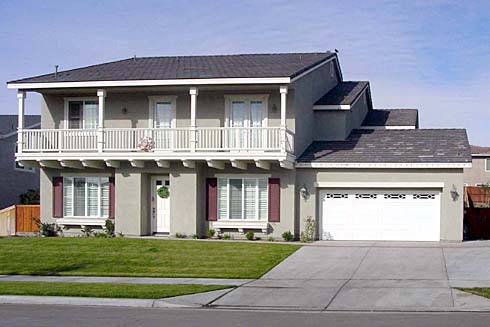BUILDING RESTRICTIONS
Understanding Building Restrictions in Real Estate
When it comes to real estate development, building restrictions play a crucial role in shaping the landscape of a community. These restrictions are put in place to regulate the type, size, and design of buildings in a particular area. Understanding building restrictions is essential for developers, homeowners, and investors as they can significantly impact property values and the overall aesthetic of a neighborhood.
What are Building Restrictions?
Building restrictions, also known as zoning regulations or building codes, are legal limitations imposed by local governments or homeowners' associations to control the use, size, and appearance of structures within a specific area. These restrictions are designed to ensure that new construction and renovations align with the established character of the neighborhood and comply with safety and environmental standards.
Types of Building Restrictions
Zoning Regulations
Zoning regulations divide a municipality into different zones or districts, each with its own set of rules regarding land use, building size, height, and density. Common zoning designations include residential, commercial, industrial, and mixed-use zones, with specific regulations tailored to each category.
Architectural Guidelines
Some communities enforce architectural guidelines to maintain a cohesive aesthetic. These guidelines may dictate architectural styles, building materials, color schemes, and landscaping requirements to preserve the overall look and feel of the neighborhood.
Environmental Restrictions
Environmental Restrictions
Environmental restrictions are in place to protect natural resources and wildlife. These may include limitations on building near wetlands, water bodies, or environmentally sensitive areas, as well as requirements for stormwater management and sustainable construction practices.
Implications of Building Restrictions
Impact on Property Values
Building restrictions can influence property values by preserving the character and appeal of a neighborhood. Restrictions that maintain a high-quality environment and prevent overdevelopment often contribute to stable or increasing property values.
Community Cohesion
By promoting uniformity in architectural styles and land use, building restrictions help create a cohesive and visually appealing community. This can foster a strong sense of identity and pride among residents.
Development Challenges
While building restrictions serve important purposes, they can also pose challenges for developers seeking to undertake new construction or renovation projects. Navigating the complex web of regulations and obtaining necessary permits can be time-consuming and costly.
Navigating Building Restrictions
Research and Due Diligence
Before embarking on a real estate project, it is crucial to thoroughly research the building restrictions in the target area. Understanding the local zoning ordinances, architectural guidelines, and environmental regulations is essential for ensuring compliance and avoiding potential setbacks.
Engage with Local Authorities
Developers and homeowners should engage with local planning departments and zoning boards to gain clarity on building restrictions and seek guidance on navigating the regulatory framework. Building strong relationships with these authorities can streamline the approval process and mitigate potential conflicts.
Work with Experienced Professionals
Seeking guidance from experienced architects, real estate attorneys, and consultants familiar with the intricacies of building restrictions can provide valuable insights and ensure that projects adhere to all applicable regulations.
Conclusion
Building restrictions are a fundamental aspect of real estate development, serving to maintain the integrity of communities, protect the environment, and guide the growth of urban areas. While navigating these restrictions can be challenging, understanding and complying with them is essential for creating sustainable and harmonious built environments.
By staying informed, engaging with local authorities, and leveraging professional expertise, developers and homeowners can navigate building restrictions effectively to create properties that enhance the fabric of their communities while complying with legal and environmental standards.
Understanding and respecting building restrictions are crucial steps in promoting responsible and sustainable real estate development, ultimately contributing to the creation of vibrant and enduring communities.
Would you like to explore any specific aspect of building restrictions further?
MORE REAL ESTATE TERMS
A, B, C, D, E, F, G, H, I, J, K, L, M, N, O, P, Q, R, S, T, U, V, W, X, Y, Z
Featured New Home

Featured Mortgage Brokers
- AMERICAN PACIFIC MORTGAGE, VISTA, CA
380 S MELROSE DR STE 203
VISTA, CA 92081 - FIRST PREFERENCE MTG CORP, BOWIE, MD
1525 POINTER RIDGE PL
BOWIE, MD 20716 - BANK OF NORTH CAROLINA, CHARLOTTE, NC
7422 CARMEL EXECUTIVE PARK DR
CHARLOTTE, NC 28226 - EVERETT FINANCIAL INC, ORANGE BEACH, AL
25910 CANAL RD STE N
ORANGE BEACH, AL 36561 - MOVEMENT MORTGAGE LLC, RICHMOND, VA
5014 MONUMENT AVE
RICHMOND, VA 23230